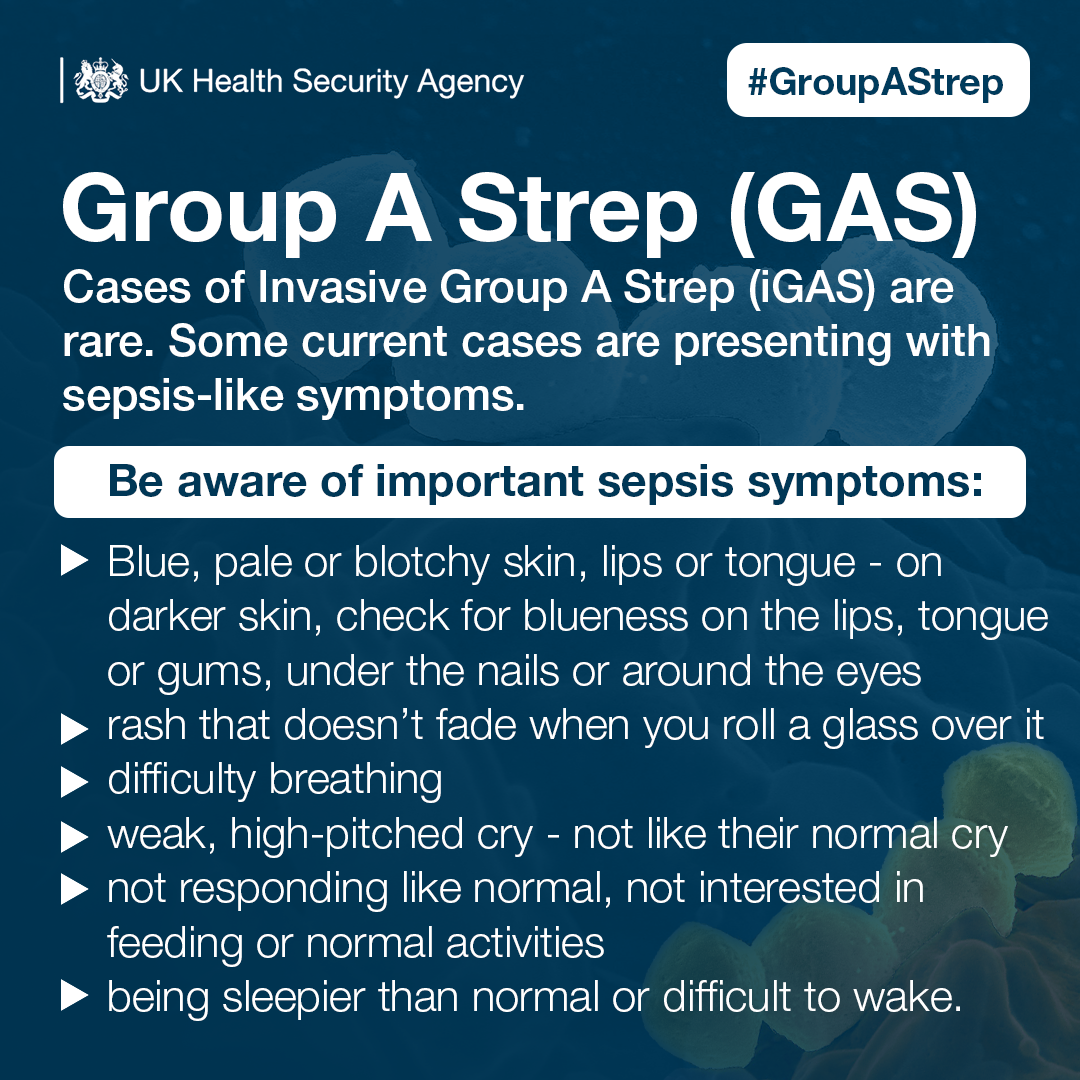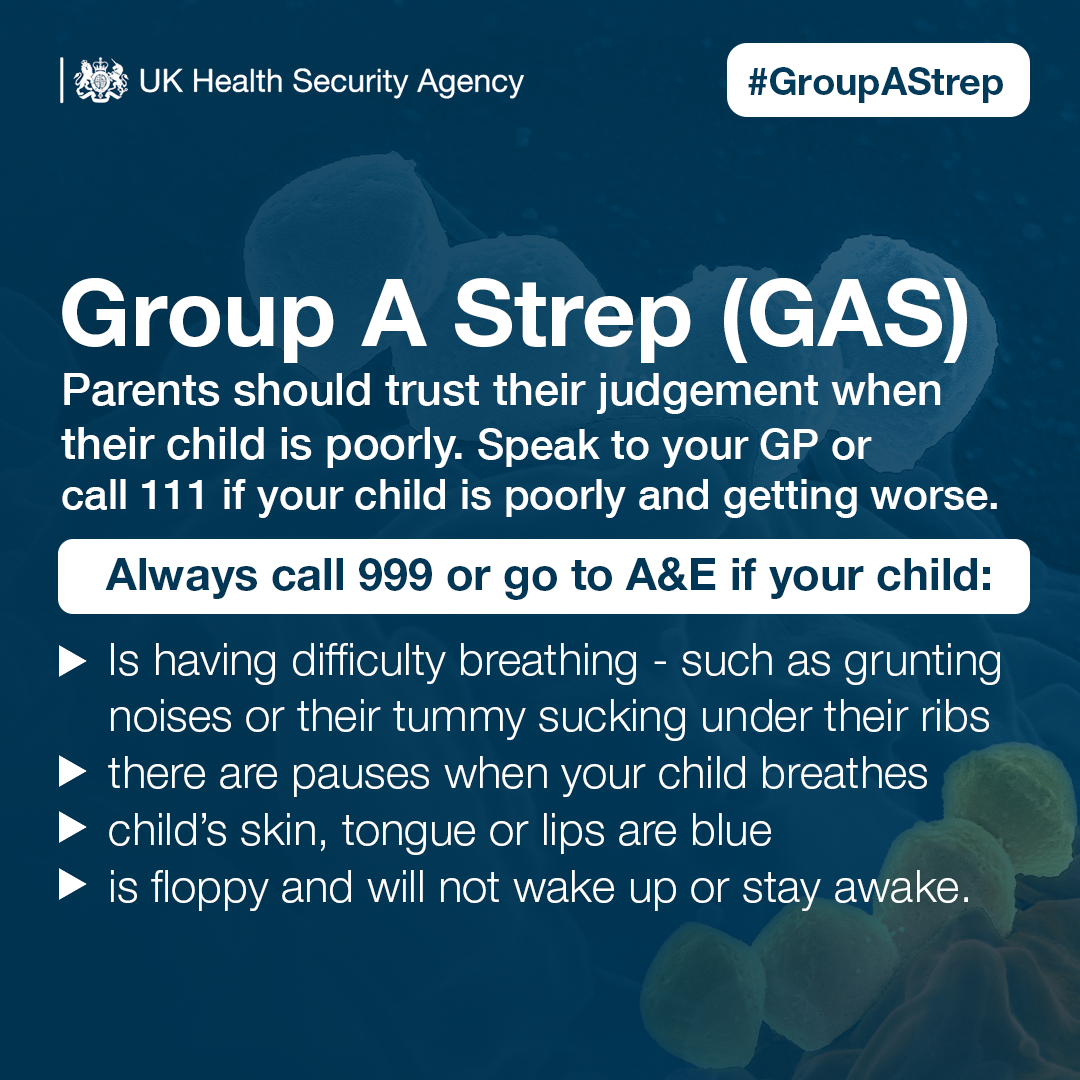Scarlet Fever and Group Strep A Infections

The Secretary of State for Education, Gillian Keegan, is closely monitoring the increased cases of Group A streptococcus (Strep A) and scarlet fever. As a Department, they are working closely with the UK Health Security Agency (UKHSA), who are leading on the response.
UKHSA is reporting an increased number of cases of Group A streptococcus (Strep A) compared to normal at this time of year.
There is no evidence that a new strain is circulating and the increase is most likely related to high amounts of circulating bacteria and social mixing.
What are scarlet fever and Strep A?
Scarlet fever is caused by bacteria called Group A streptococci (Strep A). The bacteria usually cause a mild infection that can be easily treated with antibiotics. In very rare occasions, the bacteria can get into the bloodstream and cause an illness called invasive Group A strep (iGAS).
What are the symptoms of Strep A/scarlet fever?
Strep A infections can cause a range of symptoms that parents should be aware of, including:
- Sore throat
- Headache
- Fever
- A fine, pinkish or red body rash with a sandpapery feel
- On darker skin the rash can be more difficult to detect visually but will have a sandpapery feel

If your child is unwell with these symptoms, parents, please contact your GP practice or NHS 111 (which operates a 24/7 service) to seek advice.
If your child has scarlet fever, the advice is to stay at home until at least 24 hours after the start of antibiotic treatment to avoid spreading the infection to others.
Parents, please trust your own judgement and if your child seems seriously unwell call 999 or go to A&E if:
- they are having difficulty breathing – you may notice grunting noises or their tummy sucking under their ribs
- there are pauses when your child breathes
- your child’s skin, tongue or lips are blue
- your child is floppy and will not wake up or stay awake.

How to help prevent Strep A?
To prevent the spread of Strep A, UKHSA advises children, young people and staff to implement good hand and respiratory hygiene practices.
For more information visit the UKHSA website or the Education Hub.
Managing confirmed cases
Early years settings and schools should contact their UKHSA health protection team if there is an outbreak of 2 or more scarlet fever cases within 10 days of each other and the affected individuals have a link, such as being in the same class or year group.
Further information for staff on how and when to do this can be found here: Managing outbreaks and incidents – GOV.UK (www.gov.uk)
If there are confirmed or suspected cases in an education or childcare setting, there is no reason for children to be kept at home if they are well.
